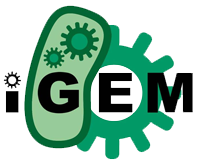Team:WHU-China/Standard
From 2011.igem.org
As we know before, each BioBrick is a piece of DNA can be spliced to any other biobrick. Standard biobricks have the same backbones with four standard restriction endonuclease sites, EcoRI & XbaI in the prefix and SpeI & PstI in the postfix. In traditional assembly, users cut off the part A biobrick with EcoRI & SpeI and cut off the vector plasmid with EcoRI & XbaI. Then they link part A to the vector. As part B is on the vector plasmid before, they can finally assemble part A and part B into one plasmid. And the product is also a standard biobrick with the same prefix and post sequence. It is an amazing design. We use this assembly way at most of the time. There is also a standard resistance gene in each backbone, always chloramphenicol, kanamycin, ampicillin or tetracycline resistance gene. But there is a problem of this standard assembling way. When we just get a composite device with several biobricks, we will have no idea of how to get the single biobrick from it, except designing a specific PCR reaction. Now we hope to modify the standard backbones to be more perfect for the biobrick assembly.

Firstly, we will keep all the former standards of the backbone plasmids (Fig2.1). That’s to say all the assembling standards will still work very well in these new backbone plasmids. Secondly, we will add another restriction endonuclease site called HindIII site both in the prefix and postfix of the backbones (Fig2.1). The two HindIII sites, one must be on the downstream of the E&X site in the prefix and another one must be also on the upstream of the S&P site in the postfix. Biobricks with this kind of backbone can be assembled as the former standard. But once we get the composite product, it will different from before. Every part of the product will get two HindIII sites, one is on the upstream and another on the downstream.

Thirdly, as to the problem before, we can cut this product with the HindIII restriction endonuclease. After the cutting, we will get each part and also the vector. Then we just need link these two together. Finally, we can get the single standard biobrick of each part (Fig2.2).

 "
"

